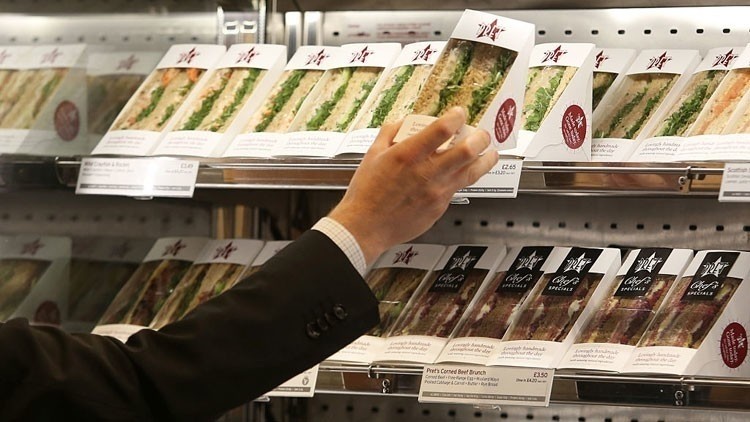Ask the Experts
Natasha’s Law: what you need to know

Natasha’s Law (or the Food Information (Amendment) (England) Regulations 2019), which comes into force in October 2021, will make it a legal requirement for all food retailers and operators to display full ingredient and allergen labelling information on every food item they sell ‘pre-packed for direct sale’. These labels must show the full name of the food; all ingredients ordered by weight; and have all allergens emphasised, such as in bold, uppercase or a different colour.
While this is without doubt a positive move for the greater good of consumers that should be welcomed, it does create an extra layer of complexity for businesses to ensure they are adhering to the, often confusing, criteria.
The gravity of this legislation is highlighted poignantly by the tragic case of Natasha Ednan-Laperouse, who sadly died after consuming a sandwich from a high street retailer that contained sesame seeds, but which did not display allergen information on the packaging. Following a large-scale campaign from her parents, the eponymous law was passed in her memory, to ensure that no such thing happens again. The case clearly highlights the severity and importance of the challenge at hand.
What constitutes ‘pre-packed for direct sale’ (PPDS)?
This is the million-dollar question and the answer is down to a significant amount of interpretation. The accepted definition of a PPDS food item is that it must be prepared, packaged and stored on the same premises from which they are being sold (or via an associated vehicle or stall); an example of this is a baguette that is assembled in the kitchen, placed in a sealed sleeve and stored in a fridge in the shopfront for a customer to grab-and-go – with the full ingredients and allergens shown on the label.
The rationale here is that hospitality is a people business and that, in a restaurant or pub environment, it falls upon the server to check for allergen requirements when serving customers. It’s much harder to manage this issue in a high-footfall grab-and-go environment, where customer churn is high and interaction between them and members of staff is significantly lower.
However, there remains plenty of uncertainty around this issue, not helped by the fact that there isn’t a set-in-stone legal definition. There is plenty of second guessing around what falls into scope versus what doesn’t, which simply isn’t helpful or productive at this stage. For example, soup that is made in the kitchen and stored in vats on a counter that the customer helps themself to, or a cake that is stored in a glass case at the till and served by a team member, or a plate of covered hot food at a buffet – would all fall out of the PPDS scope because they aren’t strictly sealed food items. This grey area means there are ways to avoid and negate the introduction of clear labelling, and that it would be down to the moral principles of businesses to do the right thing and take the legislation in the spirit it was conceived – to ensure that no one goes out for a meal and doesn’t come home again. The stakes really are that high.
The Food Standards Agency website has put together some very helpful flow-charts around PPDS food items, as well as providing guides and diagrams, which should absolutely be the first port of call for unsure operators when ascertaining what does and doesn’t require labelling.
Overcoming challenges
Assuming you’re a business that does need to introduce new labelling onto products, due to the nature of your offering, you are presented with a number of challenges. The first one is that it’s all well and good establishing a full ingredients list for each and every applicable food item, but a key part of food retail is in making packaging as desirable and enticing to customers as possible. It is unclear what impact having a larger label present on a food item will have on customer sentiment, and ultimately sales, but there’s little doubt that businesses will not want to take too much away from the presentation of their food items.
There’s then the question of where to draw the line when it comes to listing ingredients, as all the ‘bought in’ ingredients used in a recipe will need to be broken down and their constituents included on the label, creating potential headaches all along the supply chain, in a cascading Inception-like process of ingredients, within ingredients, within ingredients, and so on.
For example, if a PPDS lasagne contains Worcestershire sauce, the ingredients label would require it to be broken down to include the ingredients and allergens present in the Worcestershire sauce, creating a potential issue around spacing on the label. Magnify this problem with a recipe that contains more than 20 constituent parts, which all individually have an average of 12 components, and you’re running out of label space very fast.
It’s also going to be of vital importance that the most up-to-date label is always used on food items as, if a recipe changes and different ingredients are used and this isn’t reflected on the label, the entire process will be rendered pointless and potentially dangerous.
What can be done to help the process?
Manually tracking every ingredient used across a dish, which could have an evolving specification, simply isn’t feasible – you have to use technology. As already alluded to, there is significant scope for human error with a manual process, that is almost entirely eliminated through the adoption of automated procedures, with the necessary human checks and balances.
At Fourth, our systems enable customers to gather digital ingredient lists from manufacturers and suppliers for the products they buy, using any of the existing data-capture approaches offered by Fourth and by our partners, such as Trade Interchange. We then automatically compile the required full ingredient lists, in weight order and with the allergens emphasised, for all of the customer's dishes. These full ingredient lists are then available for label-printing and digital display via partners like Ten Kites.
Making additions and amendments to labels takes seconds, simply requiring a manual update to the text field, which is then re-automated and ready to print. This solution is an example of collaboration across the sector, combining our solution with Ten Kites’ to establish a simplified process. This approach is going to be essential when tackling Natasha’s Law and the wider allergens challenge, as only through full synchronisation up and down the supply chain will a workable solution be achieved.
People make the sector what it is, from guests to staff and everyone else involved, and creating positive experiences for all is one of the highest priorities for operators and retailers. The allergens challenge is something that everyone wants to get on top of, to prevent unnecessary tragedies, like the case of Natasha Ednan-Laperouse from occurring again. Natasha’s Law is a good thing for hospitality, it just requires collaboration and engagement across every facet, and the acceptance that it’s the start of a new journey and will require further engagement, collaboration and refining between all of us, as we leave the planning stage and enter implementation.
Michael Hordern is senior product manager at Fourth.


































